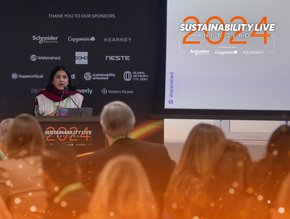$3tr to be invested in renewables by 2030 - Frost & Sullivan

Frost & Sullivan’s recent analysis, Growth Opportunities from Decarbonization in the Global Power Market, 2019-2030, reveals that the 2020s will be crucial for all the participants in the power industry as the transition toward renewable energy is expected to increase, while coal takes a downturn in most developed markets. Falling costs and renewable-friendly energy policies adopted by several countries in the six major geographies—North America, Latin America, Europe, the Middle East, China, and India—are prominent reasons why solar photovoltaic (PV) and wind capacity additions are expected to soar this decade. An estimated $3.40 trillion will be invested in renewable energy during the next decade, including $2.72 trillion in wind and solar. By 2030, 54.1% of installed capacity will be renewable (including hydropower), and 37.9% will be a combination of solar and wind.
“Decentralization, decarbonization, and digitalization are the three key pillars of the global energy transition,” said Vasanth Krishnan, Senior Research Analyst, Industrial Practice, Frost & Sullivan. “The power sector will witness strong growth in decentralization during the decade, with annual global investment increasing from $53.14 billion in 2019 to $92.54 billion in 2030. Pressure will continue to build for further decarbonization within the power system as the rate of adoption of digital technologies increases in both existing and future plants to boost operational performance.”
Krishnan added: “The surge in need for flexibility is the most significant trend observed across developed markets. System operators are coming under increasing pressure to manage the system with uncertain renewable output, declining coal output, and demand-side variability. As a result, technologies and solutions such as battery energy storage systems (BESS), gas engines, demand-side response (DSR), and virtual power plants (VPP) are witnessing unprecedented adoption rates amongst utilities, solution providers, and end consumers."
Conventional power plant operators will require extreme physical and digital agility to compete with alternative power sources and stay profitable in the longer term. In this regard, digital solutions will enable conventional thermal power plants to increase operational efficiency and asset utilization to meet the present and future needs of a smart power grid. Growth opportunities for market participants will vary considerably, depending on the region:
- North America: High energy costs drive strong market growth for energy service and performance contracting, which will more than double its size during the decade to be worth $19.14 billion in 2030.
- Latin America: Population and GDP growth, coupled with increasing electrification and industrialization, are forecast to drive electricity demand by 3.15% per annum to 2030.
- Europe: By 2030, $12.91 billion is expected to be invested annually in battery energy storage. Total installed capacity is expected to go up from 2.91 GW in 2019 to 70.02 GW by 2030.
- India: Renewable energy will account for 72.04% of capacity additions in India during the next decade. Competitive solar PV and wind project costs will be key to future investment.
- China: Adoption of energy storage will accelerate rapidly in China. The country accounts for 62% of global battery storage production capacity and is investing to boost capacity further. This will benefit the energy storage sector, as it should enable battery prices to decline.
- Middle East: Bolstered by Saudi Arabia’s shift inenergy policy, the solar power market in the Middle East will witness a surge in activity levels in the 2020s. Saudi Arabia, the UAE, Qatar, and Iran areexpected to be major markets for solar PV.
Opportunities from Decarbonization in the Global Power Market, 2019–2030 is the latest addition to Frost & Sullivan’s Energy & Environment research and analyses available through the Frost & Sullivan Leadership Council, which helps organizations identify a continuous flow of growth opportunities to succeed in an unpredictable future.
About Frost & Sullivan
For over five decades, Frost & Sullivan has become world-renowned for its role in helping investors, corporate leaders and governments navigate economic changes and identify disruptive technologies, Mega Trends, new business models and companies to action, resulting in a continuous flow of growth opportunities to drive future success. Contact us: Start the discussion.






